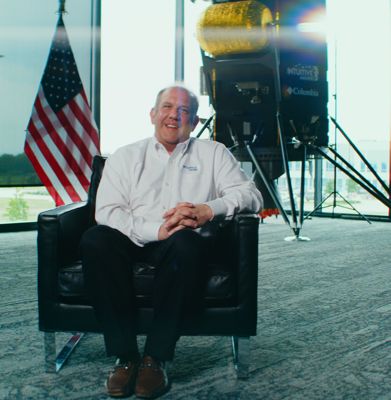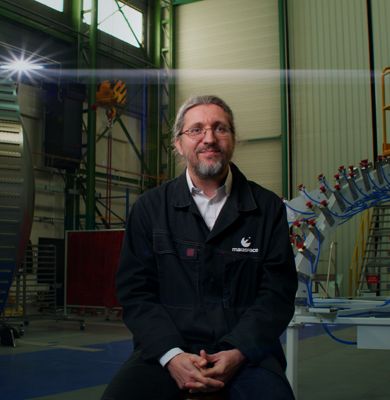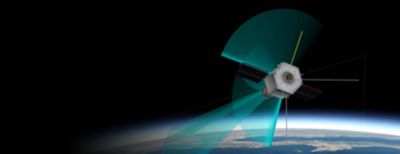-
-
Access Free Student Software
Ansys empowers the next generation of engineers
Students get free access to world-class simulation software.
-
Connect with Ansys Now!
Design your future
Connect with Ansys to explore how simulation can power your next breakthrough.
Countries & Regions
Free Trials
Products & Services
Learn
About
Back
Products & Services
Back
Learn
Ansys empowers the next generation of engineers
Students get free access to world-class simulation software.
Back
About
Design your future
Connect with Ansys to explore how simulation can power your next breakthrough.
Free Trials

Watch Ansys’ exclusive documentary to find out how innovators are changing the space industry.
On a cool summer’s night, have you ever gone outside and stared up into the ink-black sky? This vista is dotted with stars and satellites, the former of which have guided humanity for centuries, and the latter help guide us today. Have you ever wondered what it takes to innovate in this cold and distant environment?
We have. And that’s why we set out to learn from the very people at the forefront of space innovation; the people who are redefining an industry and taking us into a new future of space technology. In this documentary, you’ll hear from four exciting companies that are achieving new heights by simulating space.
Explore how simulation revolutionizes the space sector. Watch the Simulating Space film trailer above and then Join us at space.ansys.com as we journey through groundbreaking innovations and showcase how digital engineering launches a new era of exploration and discovery.
Meet the Innovators Revolutionizing the Space Industry
Astranis
From providing access to education and healthcare to helping people find employment and community, internet access is an important resource.
However, there are many people across the globe who don’t have access to the internet.
“Right now, there’s just a huge pool of talent that’s not able to contribute,” says Miki Heller, VP of business operations and strategy at Astranis, “so, in my mind, this was the biggest force multiplier of my time.”
Astranis’ solution to closing this digital divide is developing advanced, small satellites for geostationary earth orbit (GEO). In this way, Astranis can help connect people on Earth and transform lives in a tangible way.

Miki Heller, VP of business operations and strategy, Astranis
Intuitive Machines
Intuitive Machines is a diversified space company focusing on cislunar and then looking beyond — looking at low Earth orbit (LEO) and anywhere else people might want to go into space.
“(We’re) enabling that and bringing everyone along with us,” says Jason Soloff, the company’s lunar data network chief engineer.
As part of this work, Intuitive Machines is providing services to open access to the Moon, including the Nova-C class lunar lander (which enabled the company to facilitate the first commercial landing on the Moon and the first U.S. Moon landing in over 50 years) and the µNova Hopper. The company’s advanced lunar technology can be used for important research, such as searching for water ice on the Moon’s south pole.

Jason Soloff, lunar data network chief engineer, Intuitive Machines
MaiaSpace
At MaiaSpace, they’re taking sustainability to the stars. As part of this, the company is designing, manufacturing, operating, and commercializing solutions for space launch and mobility that are competitive and sustainable.
Included in this is MaiaSpace’s cost-effective mini launch vehicle with a reusable first stage.
“We are focusing on launching spacecraft that are really bound to the Earth economy and that have a meaningful impact on Earth,” says Jerome Vila, MaiaSpace’s chief product officer.
MaiaSpace’s work can provide important data — such as seismic activity detection and climate research data — that will benefit the people of Earth.

Jerome Vila, chief product officer, MaiaSpace
Relativity Space
Rockets may be fast, but their development process typically isn’t.
“Right now, there is a huge demand to get satellites and spacecraft up off the ground and into space, but as a planet, we do not have enough rockets to get them there,” says Jacqueline Sotraidis Schell, senior propulsion engineer at Relativity Space.
To address this need, Relativity Space is aiming to not only build rockets faster but also to create designs that are smarter and more affordable.
In doing so, the company hopes to revolutionize traditional rocket development and meet the growing demand for getting spacecraft into space.

Jacqueline Sotraidis Schell, senior propulsion engineer, Relativity Space
Launching a New Era of Exploration and Technological Advancement by Simulating Space
Those working in the space industry are constantly making the impossible possible, and this is happening at an increasingly accelerated rate.

To achieve this rate of growth, innovators are turning to Ansys simulation solutions to rigorously, efficiently, and accurately test and develop designs that can handle the harsh space environment — all while minimizing costs and reducing timelines. “Simulation for us is a force multiplier,” says Soloff.
With the help of Ansys simulation, those working in the space industry hope to address some of humanity's largest challenges today and build a positive future. This includes everything from using simulation to confidently plan missions and design assets to protecting these assets and exploring the Moon, Mars, and beyond.
If you’d like to discover more about space innovation and the role of simulation and digital engineering in this industry, check out the full documentary on our simulating space site, which will be continuously evolving with new resources and inspirational stories.
Just for you. We have some additional resources you may enjoy.
“Simulation for us is a force multiplier.”
— Jason Soloff, lunar data network chief engineer, Intuitive Machines
The Advantage Blog
The Ansys Advantage blog, featuring contributions from Ansys and other technology experts, keeps you updated on how Ansys simulation is powering innovation that drives human advancement.



